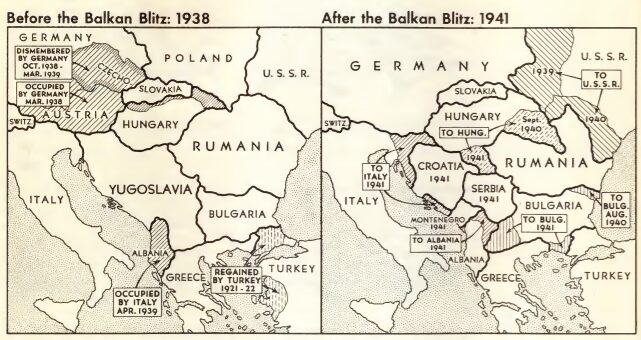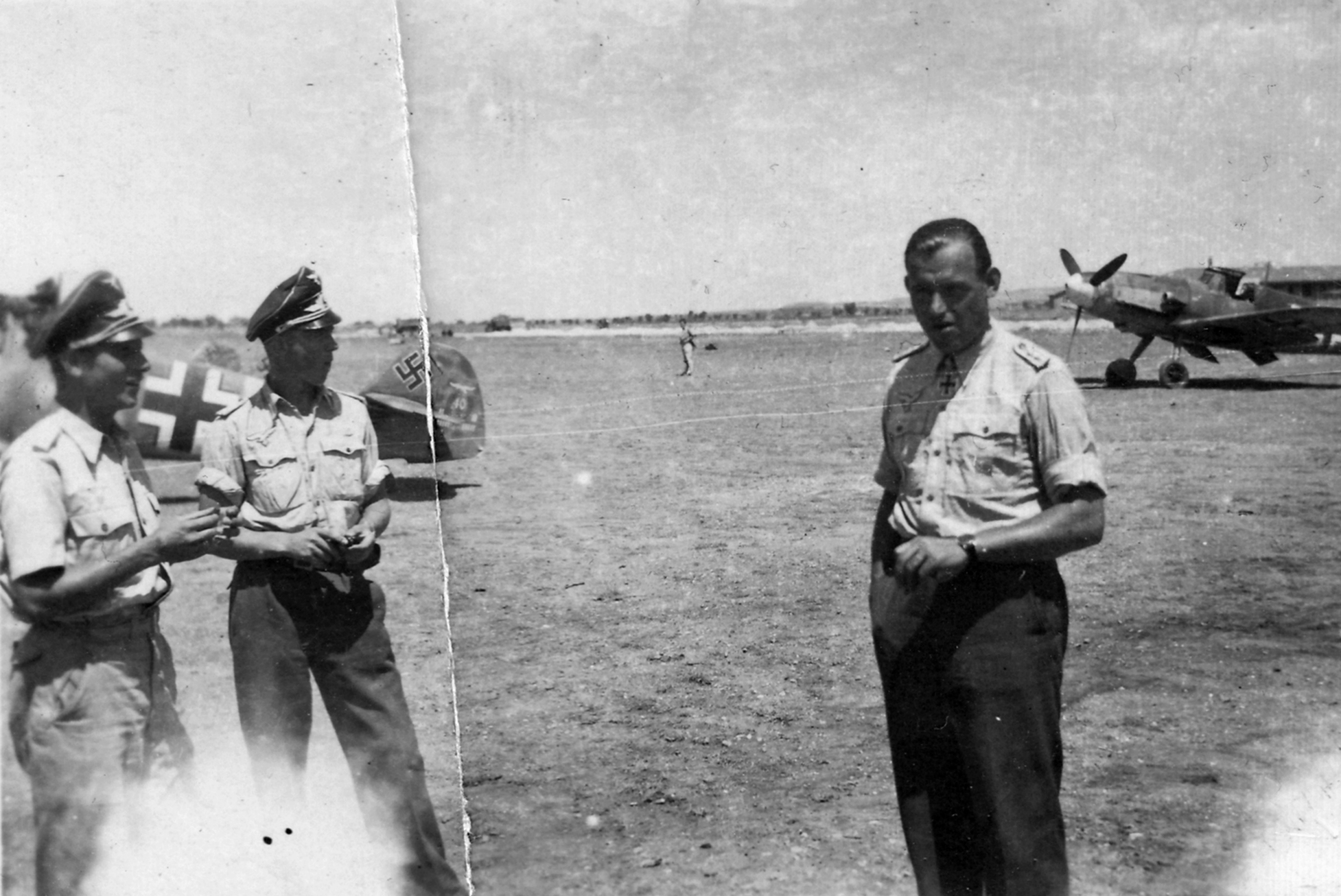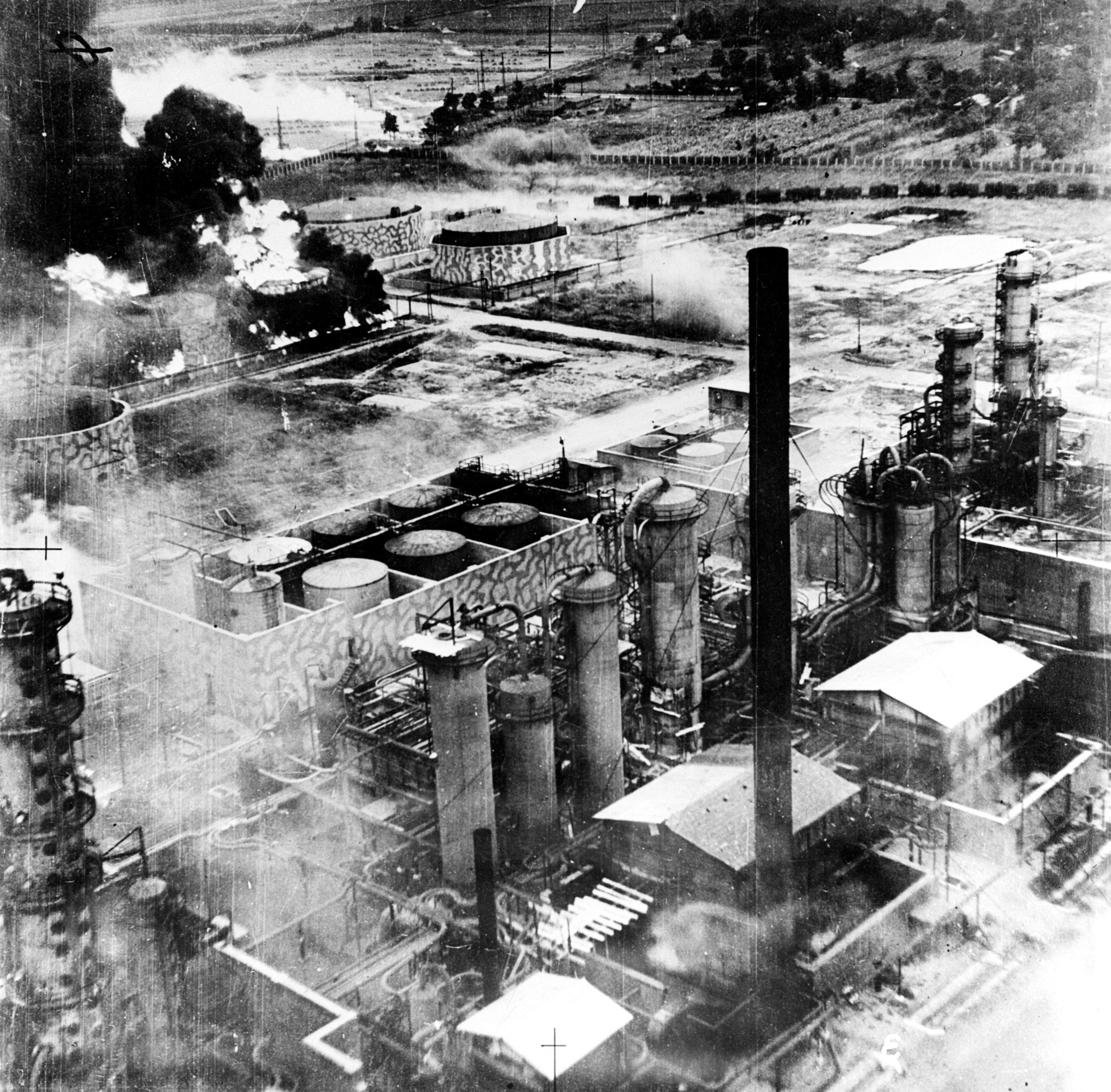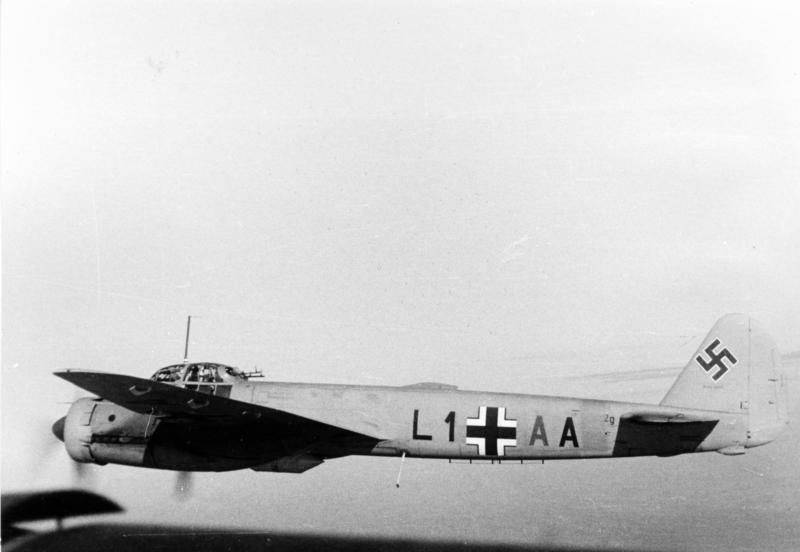|
Edmund Roßmann
Edmund "Paule" Roßmann (11 January 1918 – 4 April 2005) was a Nazi Germany Luftwaffe fighter ace during World War II. He was credited with 93 aerial victories achieved in 640 combat missions, among the numerous ground attack missions. A flying ace or fighter ace is a military aviator credited with shooting down five or more enemy aircraft during aerial combat. He is also noted as being an early mentor of Erich Hartmann, history's leading fighter ace. Career Unteroffizier "Paule" Roßmann was transferred to 7. '' Staffel'' (7th squadron) of ''Jagdgeschwader'' 52 (JG 52—52nd Fighter Wing) on 1 March 1940. At the time, 7. ''Staffel'' was commanded by ''Oberleutnant'' Herbert Ferner. The ''Staffel'' was subordinated to III. '' Gruppe'' (3rd group) of JG 52 headed by ''Major'' Wolf-Heinrich von Houwald. The ''Gruppe'' had been formed on 1 March 1940 at Strausberg and was equipped with the Messerschmitt Bf 109 E-1 and E-3. On 6 April, the ''Gruppe'' was moved to Man ... [...More Info...] [...Related Items...] OR: [Wikipedia] [Google] [Baidu] |
Caaschwitz
Caaschwitz is a municipality in the district of Greiz, in Thuringia, Germany Germany, officially the Federal Republic of Germany (FRG),, is a country in Central Europe. It is the most populous member state of the European Union. Germany lies between the Baltic and North Sea to the north and the Alps to the sou .... References Municipalities in Thuringia Greiz (district) Principality of Reuss-Gera {{Greiz-geo-stub ... [...More Info...] [...Related Items...] OR: [Wikipedia] [Google] [Baidu] |
Organization Of The Luftwaffe (1933–1945)
Between 1933 and 1945, the organization of the Luftwaffe underwent several changes. Originally, the German military high command, for their air warfare forces, decided to use an organizational structure similar to the army and navy, treating the aviation branch as a strategic weapon of war. Later on, during the period of rapid rearmament, the Luftwaffe was organized more in a geographical fashion. Under the terms of the Treaty of Versailles (1919), Germany was prohibited from having an air force, with the former German Empire's ''Luftstreitkräfte'' disbandment in 1920. German pilots were secretly trained for military aviation, first in the Soviet Union during the late 1920s, and then in Germany in the early 1930s. In Germany, the training was done under the guise of the German Air Sports Association (german: Deutscher Luftsportverband (DLV)) at the Central Commercial Pilots School (german: Zentrale der Verkehrs Fliegerschule (ZVF)). Following its 15 May 1933 formation in secre ... [...More Info...] [...Related Items...] OR: [Wikipedia] [Google] [Baidu] |
Balkan Campaign (World War II)
The Balkans campaign of World War II began with the Italian invasion of Greece on 28 October 1940. In the early months of 1941, Italy's offensive had stalled and a Greek counter-offensive pushed into Albania. Germany sought to aid Italy by deploying troops to Romania and Bulgaria and attacking Greece from the east. Meanwhile, the British landed troops and aircraft to shore up Greek defences. A ''coup d'état'' in Yugoslavia on 27 March caused Adolf Hitler to order the conquest of that country. The invasion of Yugoslavia by Germany and Italy began on 6 April 1941, simultaneously with the new Battle of Greece; on 11 April, Hungary joined the invasion. By 17 April the Yugoslavs had signed an armistice, and by 30 April all of mainland Greece was under German or Italian control. On 20 May Germany invaded Crete by air, and by 1 June all remaining Greek and British forces on the island had surrendered. Although it had not participated in the attacks in April, Bulgaria occupied pa ... [...More Info...] [...Related Items...] OR: [Wikipedia] [Google] [Baidu] |
Battle Of Crete
The Battle of Crete (german: Luftlandeschlacht um Kreta, el, Μάχη της Κρήτης), codenamed Operation Mercury (german: Unternehmen Merkur), was a major Axis airborne and amphibious operation during World War II to capture the island of Crete. It began on the morning of 20 May 1941, with a multiple German airborne landings on Crete. Greek and other Allied forces, along with Cretan civilians, defended the island. After only one day of fighting, the Germans had suffered heavy casualties and the Allied troops were confident that they would defeat the invasion. The next day, through communication failures, Allied tactical hesitation, and German offensive operations, Maleme Airfield in western Crete fell, enabling the Germans to land reinforcements and overwhelm the defensive positions on the north of the island. Allied forces withdrew to the south coast. More than half were evacuated by the British Royal Navy and the remainder surrendered or joined the Cretan resistan ... [...More Info...] [...Related Items...] OR: [Wikipedia] [Google] [Baidu] |
Jagdgeschwader 77
''Jagdgeschwader'' 77 (JG 77) ''Herz As'' ("Ace of Hearts") was a Luftwaffe fighter wing during World War II. It served in all the German theaters of war, from Western Europe to the Eastern Front, and from the high north in Norway to the Mediterranean. All three '' gruppen'' (groups) within the unit operated variants of the Messerschmitt Bf 109. II. Gruppe was the only German unit entirely equipped, albeit only during November–December 1943, with the Macchi C.205, a highly regarded Italian fighter. Formation Initially, JG 77 was created with two '' Gruppen'' (groups) and without a ''Geschwaderstab'' (headquarters unit). I. ''Gruppe'' of JG 77 was created from IV. ''Gruppe'' of ''Jagdgeschwader'' 132 (JG 132—132nd Fighter Wing), which had become I. ''Gruppe'' of ''Jagdgeschwader'' 331 (JG 331—331st Fighter Wing) on 3 November 1938 before it was renamed to I. ''Gruppe'' of JG 77 on 1 May 1939. II. ''Gruppe'' of JG 77 was derived from one of ... [...More Info...] [...Related Items...] OR: [Wikipedia] [Google] [Baidu] |
Pipera Airport
Bucharest Pipera Airfield was located in the Pipera neighborhood of Bucharest, Romania, at the northern edge of the city, right next to the town of Voluntari, Ilfov County. The airport no longer exists. A small military base, which also hosts the , remains in the location where the airport used to be. History The airfield was built in the interwar period. The first direct flight from Paris to Bucharest was done by the French–Romanian airline company CIDNA/CFRNA, with a plane piloted by Albert Louis Deullin, who landed at Pipera Airport in October 1921. During World War II, Pipera Airport was the main military airport in the Bucharest area. Some units of the Romanian Air Force units were flying IAR 80 planes (built in Brașov), while a unit under the command of Mihail Romanescu-Leu was flying Messerschmitt Bf 109 planes from there. In the Fall of 1940, Major Gotthard Handrick and a group German fighter pilots who had participated in the Battle of Britain were sent by Adolf ... [...More Info...] [...Related Items...] OR: [Wikipedia] [Google] [Baidu] |
Ploiești
Ploiești ( , , ), formerly spelled Ploești, is a city and county seat in Prahova County, Romania. Part of the historical region of Muntenia, it is located north of Bucharest. The area of Ploiești is around , and it borders the Blejoi commune in the north, Bărcănești and Brazi communes in the south, Târgșoru Vechi commune in the west, and Bucov and Berceni communes in the east. According to the 2011 Romanian census, there were 201,226 people living within the city limits, making it the ninth most populous in the country. The city grew beginning with the 17th century on an estate bought by Michael the Brave from the local landlords, gradually taking the place of the nearby Wallachian fairs of Târgșor, Gherghița and Bucov. Its evolution was accelerated by heavy industrialisation, with the world's first systematic petroleum refinery being opened in 1856–1857. Following massive exploitation of the oil deposits in the area, Ploiești earned the nickname of "th ... [...More Info...] [...Related Items...] OR: [Wikipedia] [Google] [Baidu] |
Werneuchen
Werneuchen () is a town in Brandenburg, Germany, in the district of Barnim northeast of Berlin within the metropolitan area. Most of the population of Werneuchen commutes to Berlin. Demography File:Bevölkerungsentwicklung Werneuchen.pdf, Development of Population since 1875 within the Current Boundaries (Blue Line: Population; Dotted Line: Comparison to Population Development of Brandenburg state; Grey Background: Time of Nazi rule; Red Background: Time of Communist rule) File:Bevölkerungsprognosen Werneuchen.pdf, Recent Population Development and Projections (Population Development before Census 2011 (blue line); Recent Population Development according to the Census in Germany in 2011 (blue bordered line); Official projections for 2005-2030 (yellow line); for 2017-2030 (purple line); and for 2020-2030 (green line). International relations Werneuchen is twinned with: * Dziwnów Dziwnów (formerly german: Dievenow) is a town in north-western Poland situated on ... [...More Info...] [...Related Items...] OR: [Wikipedia] [Google] [Baidu] |
Jever Air Base
Jever Air Base is a former German Air Force military air base, located 4.3 km west-southwest of Schortens in Lower Saxony, Germany. It was the home of parts of the German Air Force Regiment. Military flying ceased in September 2013. History The airfield was originally opened in 1936 for the Luftwaffe. It was seized during World War II by the British Army in April 1945 and taken over by the Royal Air Force (RAF). It was designated as Advanced Landing Ground B-117 Jever. It was later designated RAF Jever and used by the RAF beginning in 1952 as part of the Cold War British Forces in West Germany. RAF units assigned were: * 1952: 20 Squadron reformed with de Havilland Vampire FB.9 * 1952–1953: 112 Squadron with Vampire FB.5 * 1952–1961: 4 Squadron & 93 Squadron with Vampire FB.5 (replaced with FB.9), later Canadair Sabre F.4, later Hawker Hunter F.4 (replaced with F.6) * 1955–1957: 98 Squadron & 118 Squadron with Hunter F.4 * 1957–1961: 2 Squadron with Supermar ... [...More Info...] [...Related Items...] OR: [Wikipedia] [Google] [Baidu] |
Jagdgeschwader 53
''Jagdgeschwader'' 53 (JG 53) was a Luftwaffe fighter-wing of World War II. It operated in Western Europe and in the Mediterranean. ''Jagdgeschwader'' 53 - or as it was better known, the "Pik As" ''(Ace of Spades)'' Geschwader - was one of the oldest German fighter units of World War II with its origins going back to 1937. JG 53 flew the various models of the Messerschmitt Bf 109 throughout World War II. World War II Invasion of France; Battle of Britain The ''Geschwader'' commenced its wartime operations with a high proportion of its personnel experienced ex-Condor Legion pilots including Werner Mölders. On 14 May 1940, JG 53 claimed some 43 victories in one day. The Battle of France thus saw the Geschwader score heavily during May and June 1940, with some 275 claims against ''Armee de l'Air'' and Royal Air Force forces. While JG 53 was making a reputation for itself during the Battle of Britain, according to RAF Air Ministry intelligence summary no. 60, ''Reichsmarschall' ... [...More Info...] [...Related Items...] OR: [Wikipedia] [Google] [Baidu] |
Stab (Luftwaffe Designation)
The German language term ''Stab'' (literal translation: "staff") was used during World War II to designate a headquarters unit of the German ''Luftwaffe'' (air force). There were ''Stab'' units at the level of a '' Gruppe'' or ''Geschwader'' – units that were equivalent to wings and groups in the air forces of the English-speaking world. ''Stab'' units directly controlled aircraft as well as controlling those belonging to subordinate units. These command units used the mandated blue or green "staff aircraft" colour for the third character (the individual aircraft's letter) of their alphanumeric ''Geschwaderkennung'' wing code, to distinguish their aircraft from the rest of air units in the same unit. These units were divided in the following form, for the fourth and last character normally used to distinguish individual '' Staffeln'' (squadrons) from the letter "H" onwards in Luftwaffe wing codes: *''Geschwader Stab'' = A (third letter blue) *''Stab I Gruppe'' ("Staff U ... [...More Info...] [...Related Items...] OR: [Wikipedia] [Google] [Baidu] |
Coleman Army Airfield
Coleman Barracks/Coleman Army Airfield (ICAO: ETOR) is a United States Army military installation located in the Sandhofen district of Mannheim, Germany. It is assigned to U.S. Army, Europe ( USAREUR) and administered by the U.S. Army Installation Management Command-Europe (IMCOM-E). Coleman Barracks should not be confused with the former "Coleman Kaserne", located in Gelnhausen. The U.S. Army named the airfield after Lieutenant Colonel Wilson D. Coleman, who was killed in action in France on 30 July 1944. History The first commercial airport in Mannheim was founded on 16 May 1925, as ''Flughafen Mannheim-Heidelberg-Ludwigshafen'' in the northern district of Sandhofen. With its opening Mannheim became part of an important air track, running from north to south and vice versa. In the late 1920s and early 1930s Deutsche Aero Lloyd operated cargo and passenger flights from Hamburg to Zürich stopping in Mannheim. Balair from Switzerland flew between Geneva and Amsterdam ... [...More Info...] [...Related Items...] OR: [Wikipedia] [Google] [Baidu] |








